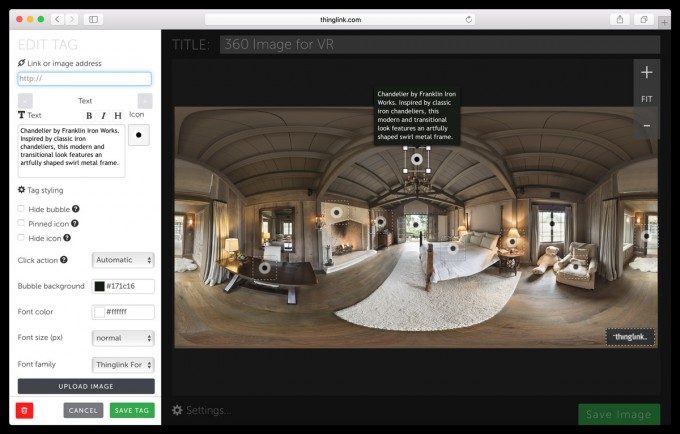Money continues to pour into the VR space, but not all of it is aimed at brand new ventures. Last week, the interactive media platform, ThingLink (founded in 2008), announced the closing of a $1.3M round of new funding to expand their image and video enhancement SaaS service to VR.
The investment (primarily led by Run Capital) gives them the runway to experiment without a huge initial market. The focus will be on their new VR Editor, which expands upon their existing technology to enable creators to add interactive annotations to 360 degree images and video which can run directly inside a browser on desktop or mobile. The mobile version now has a VR component for viewing through Cardboard viewers.
While not the most exciting announcement from a VR aficionado’s perspective, it continues to prove that existing technologies and services are putting money towards experimentation in a market that is still coming into its own; from military applications to live sports, we will continue to see businesses find ways to express their content in the VR and AR space.
[gfycat data_id=”AlarmedDistantJaguar” data_autoplay=true data_controls=false]
ThingLink’s mobile solution running in VR mode through the browser.
ThingLink is very much aware of these potential expressions, and part of their shift towards VR is an attempt to capture that market. While they wrap the idea around marketing spin of a “storytelling platform,” they hint at the larger market of retail catalogs and online brands.
“We want to make mobile VR an engaging storytelling platform and viable business for brands and publishers,” said ThingLink founder and CEO Ulla Engestrom as part of the announcement. “First off, we’re bringing down the cost of creation by making it easy for anybody to add points of navigation to 360 content. Second, we make it possible to share and view these stories on iOS and Android without downloading a separate app. With these parameters, several of our clients who have used ThingLink for interactive news images, maps, infographics, and catalogs, are now ready to move to virtual reality.”
The VR space certainly has been seeing investments like these, but as the future of computing continues to move towards the integrated VR experience, no one should be surprised by continued investment in companies that begin to shift and adapt toward a more VR-oriented capability.








